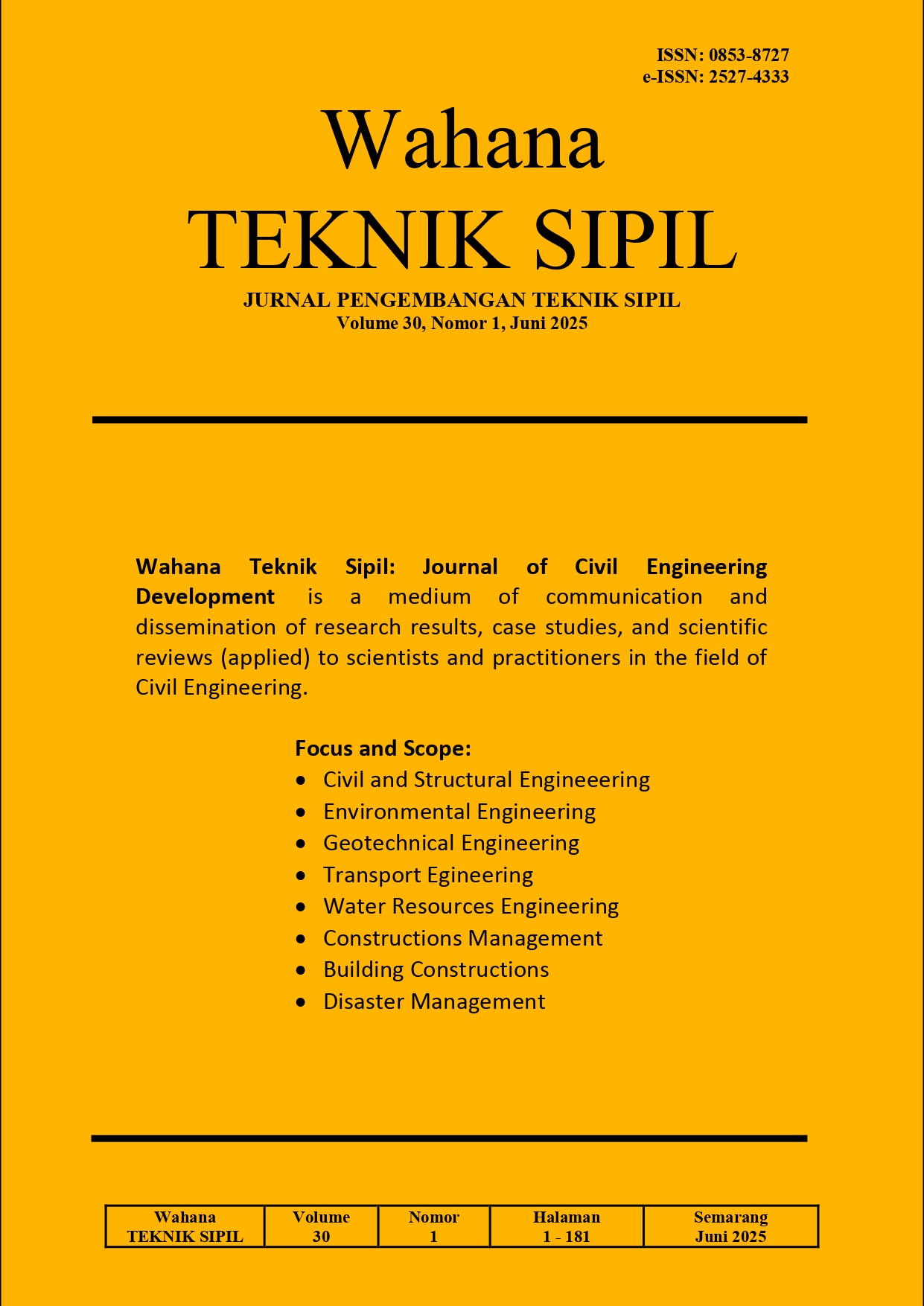EVALUASI EFEKTIVITAS BAKTERI BACILLUS MEGATERIUM SEBAGAI MATERIAL INJEKSI SELFHEALING UNTUK PERBAIKAN RETAK BETON
DOI:
https://doi.org/10.32497/wahanats.v30i1.6652Abstract
Concrete deterioration is a significant problem in the construction industry, which can reduce the service life and structural performance of buildings. Conventional repair methods, such as the use of epoxy and other bonding materials, are commonly used to improve the durability of concrete, but often rely on synthetic materials that are not environmentally friendly. This study focuses on the use of Bacillus megaterium bacteria combined with epoxy as a self-healing injection material, offering an environmentally friendly and sustainable solution to overcome concrete cracking. This study explores the potential of Bacillus megaterium to biologically repair concrete structures by adding the bacteria to epoxy at concentrations of 5%, 10%, 15%, 20%, and 25%. Concrete blocks measuring 100 mm x 100 mm x 500 mm were tested using flexural strength, ultrasonic wave velocity (UPV), and scanning electron microscopy (SEM) tests to assess the effectiveness of the repair. The results showed that at a concentration of 15%, Bacillus megaterium increased the flexural strength by 12.19% of the initial strength and the UPV velocity reached 3.19 km/s, which was almost equivalent to normal concrete. SEM analysis showed the formation of calcium carbonate deposits on the cracks, indicating the success of the self-healing process. This study shows that the application of Bacillus megaterium in epoxy provides an environmentally friendly alternative to conventional concrete repair methods, reduces dependence on synthetic chemicals, and extends the service life of concrete infrastructure. This innovation contributes to the development of more sustainable and efficient construction practices in civil engineering.
Downloads
Published
Issue
Section
License

This work is licensed under a Creative Commons Attribution 4.0 International License.
Authors who publish with this journal agree to the following terms:Authors retain copyright and grant the journal right of first publication with the work simultaneously licensed under a Creative Commons Attribution License that allows others to share the work with an acknowledgement of the work's authorship and initial publication in this journal.
Authors are able to enter into separate, additional contractual arrangements for the non-exclusive distribution of the journal's published version of the work (e.g., post it to an institutional repository or publish it in a book), with an acknowledgement of its initial publication in this journal.
Authors are permitted and encouraged to post their work online (e.g., in institutional repositories or on their website) prior to and during the submission process, as it can lead to productive exchanges, as well as earlier and greater citation of published work (See The Effect of Open Access).






